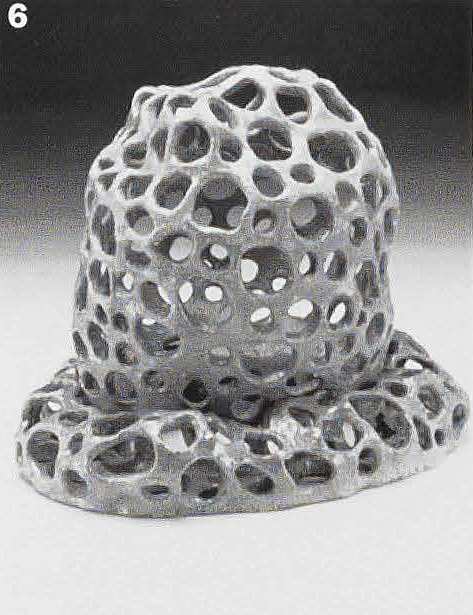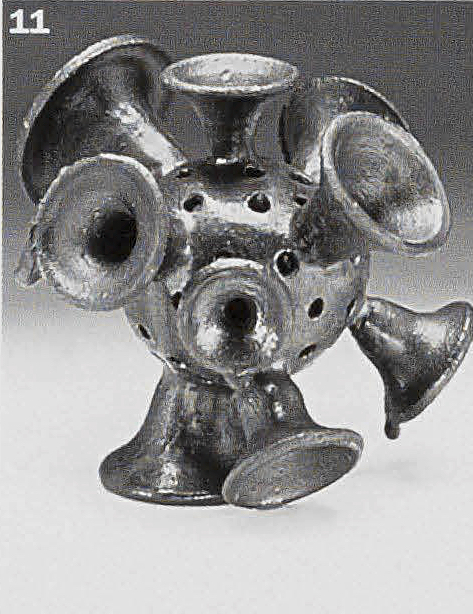The Sculpture of Life Forms at Juniata College
Several years ago, I became intrigued with Art Forms in Nature, a book of drawings by Ernst Haeckel (1834-^9) depicting microscopic creatures such as radiolarians (a type of marine Protozoa), foraminifera, and diatoms. The exquisite structure of these miniscule organisms engaged me for their sculptural and aesthetic qualities, as they have many artists and architects, including Buckminster Fuller. I decided to teach an upper-level undergraduate class for non-art majors called "The Sculpture of Life Forms." Since many of my students were science majors and their experience included facility with both handbuilding and wheel-throwing processes, they could already "think in clay."
Taking a cue from the poet Wallace Stevens—"Accuracy of observation is the equivalent of accuracy of thinking"—we began making a series of life studies, rendering small objects from the natural world to exact scale, later enlarging them by several factors. The first assignment was to replicate one of the most sculptural of foods - a piece of popcorn - to scale, in porcelain, followed by a hollow version as a lidded container six to eight inches high, and finally as a free standing sculpture eighteen inches high.
Other assignments included "Improbable Evolution," in which participants selected two objects by touch from a container they couldn't see into, and then depicted how one might evolve into the other by forming three to five separate objects sharing morphed characteristics. Some of the choices were a lobster claw, seedpods, vertebrae, shells, coral, pinecones, fossils, volcanic artifacts, and various wood anomalies such as knots and roots.
Haeckel's drawings of marine microorganisms provided a rich array of intricate structural components perfectly suited to replication in clay.
The forms of some species of moss animals, for example, lend themselves to being thrown on the wheel as hollow enclosed forms, then cut apart so the interior space can be further articulated or joined with others in a "close packing" colony. Juniata biologist Dr. Jay Hostler visited the class, helping us understand the nature of the creatures whose lives depend on the exquisite architectural silica-based, microcrystalline structures they create for protection.
He joined us in discussing why we find images of such structures so aesthetically compelling. As someone in class said, "Complex symmetry in itself is beautiful to witness." Studying the creations of single-cell creatures increased our sense of wonder all the more.

In a sense, he had discovered the truth in Robert Frost's lines:
My object in living has been to unite my avocation with my vocation as my two eyes make one in sight. At the conclusion of the class, many of the works were exhibited in the entry to Juniata's Von Liebig Center for the Sciences, where the enthusiasm they generated led the biology department to purchase the pieces, as well as others from similar assignments, to form a permanent collection of student-created ceramic sculpture with biological origins.

